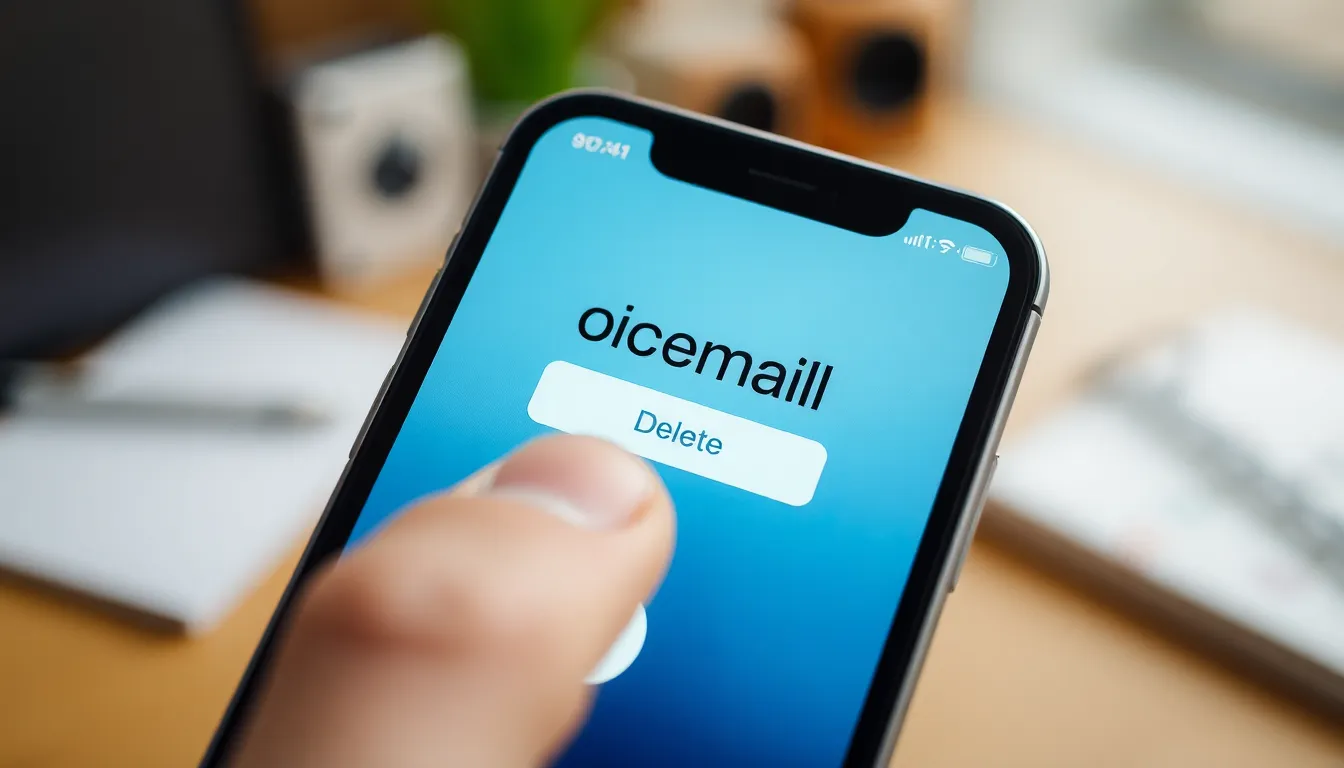Voicemails can feel like little nuggets of gold, but what happens when you accidentally toss one into the digital abyss? Losing that heartfelt message from a loved one or an important reminder can be as gut-wrenching as stepping on a Lego. Fear not, though—retrieving a deleted voicemail on an iPhone isn’t as daunting as it sounds.
Table of Contents
ToggleUnderstanding Voicemail on iPhone
Voicemail serves as a digital messaging service, allowing users to receive voice messages when unable to answer calls. This feature is vital for maintaining communication, especially for important conversations.
What Is Voicemail?
Voicemail is a system that records voice messages when a call is not answered. Users can retrieve these messages later, enabling them to listen to important updates. Many people value voicemails from friends, family, or work, making retrieval essential. Voicemail technology varies among carriers, yet the core function remains the same: providing an accessible way to communicate.
How Voicemail Works on iPhone
Voicemail operates through the Phone app on an iPhone. When someone leaves a message, it gets stored in a secure digital format on the carrier’s server. Users can access their voicemails anytime by tapping the Voicemail tab within the app. Messages can be played back, saved, or deleted based on user preference. Visual voicemail provides convenience, displaying messages in a list for easier management. Features like transcription help users read messages quickly, improving overall efficiency.
Common Reasons for Voicemail Deletion

Voicemail messages can sometimes vanish, and understanding why helps prevent future losses. Various factors contribute to deletion, including accidental removal and storage management choices.
Accidental Deletion
Accidental deletion often happens when users navigate through their voicemail options. One wrong tap can erase a cherished message, especially while trying to manage multiple voices. Users frequently discover they deleted an important voicemail in moments of distraction. Initial shock and regret quickly follow. This scenario highlights the importance of careful navigation and understanding voicemail controls.
Storage Management
Storage management plays a vital role in voicemail retention. Users experience automatic deletions when voicemail boxes reach capacity limits. iPhones typically have a voicemail storage limit of around 100 messages. Once this threshold is crossed, older messages automatically delete to make room for new ones. Regularly reviewing and deleting unwanted messages keeps voicemail organized and manageable. Users can benefit from checking storage limits routinely to prevent unintentional losses.
Steps to Retrieve a Deleted Voicemail on an iPhone
Retrieving a deleted voicemail on an iPhone involves a few straightforward steps. Users can often recover these valuable messages with the right approach.
Check the Deleted Messages Folder
Many iPhone users overlook the Deleted Messages folder within the Phone app. Accessing this folder can lead to finding recently deleted voicemail messages. To check, open the Phone app, tap on the Voicemail tab, and then look for the Deleted Messages option. Messages remain in this folder for up to 30 days before permanent deletion. Anyone retrieving a voicemail should act quickly, as messages might not stay available for long.
Using iCloud for Voicemail Recovery
iCloud can assist in recovering deleted voicemails if enabled before deletion. Users may restore lost messages by signing into iCloud on their iPhone. Next, navigate to Settings, tap on the user’s name, and select iCloud. From there, ensure that Voicemail syncing is enabled. If the feature is turned on, users may find restored voicemails upon checking the Voicemail tab. A successful recovery relies on having backups in place at the time of deletion.
Additional Tips for Voicemail Management
Voicemail management plays a crucial role in maintaining an organized digital communication system. Utilizing effective strategies can prevent loss and enhance retrieval efforts.
Regular Backups
Backing up data regularly can simplify voicemail recovery. Users can leverage iCloud or iTunes to schedule automatic backups. Frequent backups provide a safety net, ensuring that deleted voicemails remain accessible. Setting reminders to perform these backups frequently keeps important messages secure. Always check backup settings to confirm that voicemail syncing is enabled for an effortless restoration process.
Managing Storage Effectively
Managing storage is essential for preventing accidental voicemail deletion. iPhones typically hold about 100 voicemails, making it vital to regularly review saved messages. Users should delete unwanted messages to free up space for new voicemails. Clearing out outdated messages can help maintain an organized inbox, ensuring that crucial communications remain within reach. Regular monitoring of voicemail limits supports the retention of important messages and amplifies overall device efficiency.
Retrieving a deleted voicemail on an iPhone can be a straightforward process if users act quickly and follow the right steps. By checking the Deleted Messages folder and utilizing iCloud for backup, many messages can be restored before they’re permanently lost. Regularly managing voicemail storage and backing up important communications can prevent future mishaps. With a little attention and care, users can ensure they don’t miss out on cherished messages from loved ones or crucial reminders. Embracing these practices not only safeguards valuable voicemails but also enhances overall device efficiency.




